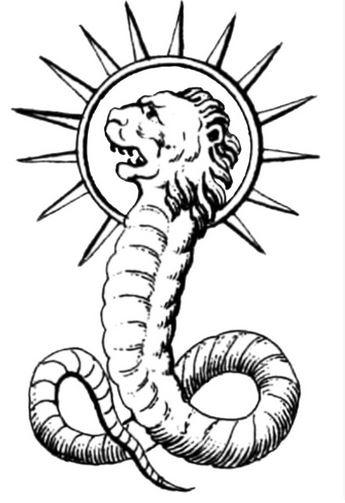Sethian

The term Sethian refers to a group of Gnostic traditions that place particular emphasis on the figure of Seth, the third son of Adam and Eve, who plays a significant role in Sethian Gnosticism. Sethian Gnosticism is one of the early and important schools of thought in Gnostic Christianity, a religious and philosophical movement that emerged in the early centuries of the Common Era, often regarded as heterodox or heretical by mainstream Christian authorities.
1. Seth in the Bible:
In the Bible, Seth is introduced in the Book of Genesis as the third son of Adam and Eve, born after the death of Abel (Genesis 4:25). Seth is seen as a replacement for Abel, who was murdered by his brother Cain. However, the Bible offers very little information about Seth beyond his lineage, and he is mainly noted for fathering Enosh, through whom the line of descent leading to Noah and ultimately to the Israelites is traced.
While Seth is not depicted as a particularly significant figure in the biblical text, Sethian Gnosticism developed a very different and much more elaborate understanding of him.
2. Sethian Gnosticism:
Sethian Gnosticism is a form of Gnosticism that emerged in the 2nd and 3rd centuries CE. Gnosticism is a religious and philosophical movement that emphasizes esoteric knowledge (gnosis) as the means of salvation, viewing the material world as a creation of a lesser deity (the Demiurge) and advocating for the soul's ascent to a higher, divine realm.
Key Elements of Sethian Gnosticism:
-
Seth as the Spiritual Ideal: In Sethian texts, Seth is depicted not as a mere historical figure but as a divine being, often associated with the highest, most transcendent aspects of divinity. Seth is considered the true "seed" of Adam, the one who embodies pure spiritual knowledge and is often presented as a divine redeemer figure. This is in stark contrast to the traditional biblical portrayal of Seth as just another link in the genealogical chain.
-
Seth as a Savior: Sethians viewed Seth as a representative of the higher spiritual realm, an archetype of the divine spark trapped in the material world. Seth was seen as a figure of salvation, a revealer of hidden spiritual truths, and the bringer of divine wisdom that could help souls escape the corruption of the material world.
-
The Role of Sophia: The Sethian tradition frequently emphasizes Sophia (Greek for "wisdom"), a key figure in Gnostic cosmology. According to Sethian Gnosticism, Sophia is the divine feminine wisdom who, through her fall into ignorance, unintentionally creates the Demiurge, a lower deity who governs the physical universe. Sophia’s role is central to many Gnostic texts, as she is often depicted as the one who helps guide the soul toward gnosis and salvation. In Sethian Gnosticism, it is through the knowledge (gnosis) of divine beings like Seth and Sophia that the soul is able to ascend to the higher spiritual realms.
-
Sethian Texts: Sethian Gnosticism is known for its distinctive religious texts, some of which were discovered in the Nag Hammadi library in 1945, a collection of early Christian and Gnostic scriptures. These include works such as:
-
The Apocryphon of John (also known as the Secret Book of John): A foundational text in Sethian Gnosticism that describes the creation of the world and the fall of Sophia, as well as the role of the Sethian divine figures.
-
The Gospel of Judas: Another text associated with Sethian Gnosticism, which presents Judas Iscariot in a positive light, portraying him as the one disciple who truly understood Jesus’ teachings and helped fulfill a divine plan.
-
The Three Steles of Seth: A mystical text that elaborates on the divine nature of Seth and his relationship to higher spiritual realms.
-
3. Key Beliefs of Sethian Gnosticism:
-
Dualism: Sethian Gnosticism shares with other forms of Gnosticism the belief in a dualistic worldview, where the material world is seen as flawed or even evil, created by a lower god or the Demiurge. The true, transcendent God is seen as separate from the material universe, and salvation is attained through the knowledge (gnosis) of this higher realm.
-
Gnosis and Salvation: The central belief of Gnosticism, including Sethianism, is that salvation comes through gnosis, or direct, experiential knowledge of the divine. This knowledge allows the soul to transcend the physical world and return to its true home in the spiritual realm. In Sethian thought, this involves the soul being liberated from the false creation of the Demiurge and returning to the divine source.
-
Rejection of the Demiurge: Like other Gnostic sects, the Sethians viewed the Demiurge (the creator of the material world) as a false god or a lower being who trapped humanity in a corrupt, physical existence. The Demiurge is often depicted as ignorant or malicious, keeping human souls bound to the material world through illusion.
-
Seth as the Logos: In some Sethian texts, Seth is presented as a divine figure who represents the Logos, a principle of divine order and reason that is often associated with Christ in Christian Gnostic thought. Seth embodies the ultimate knowledge and wisdom that humans need to escape the material world.
4. The Influence of Sethianism:
Sethian Gnosticism was one of several Gnostic schools that flourished in the early centuries of the Common Era, alongside other groups like the Valentinians and the Marcionites. Gnostic movements were eventually deemed heretical by early Christian authorities, and many of their texts were suppressed.
However, the rediscovery of Gnostic texts in the 20th century, especially the Nag Hammadi library, has led to renewed interest in Gnosticism and its various branches, including Sethianism. Scholars today study Sethian texts for their insights into early Christian theology, the development of Gnostic thought, and the way early Christians interacted with the emerging orthodox Christian doctrines.
5. Sethianism's Legacy:
Though Sethianism as an organized movement faded by the 4th century, its ideas about salvation, divine wisdom, and the nature of the cosmos influenced later esoteric traditions and continue to resonate in some mystical and occult circles. Elements of Sethian thought can be found in Western esotericism, Kabbalah, and even Christian mysticism, where the ideas of spiritual ascent, the redemption of the soul, and the quest for hidden knowledge persist.
In Summary:
Sethian Gnosticism was an early and significant Gnostic tradition that elevated the biblical figure of Seth to a central, divine role, portraying him as a bearer of divine wisdom and a spiritual redeemer. Sethians believed that Seth embodied the highest spiritual knowledge, which could help souls escape the material world created by the Demiurge. Through texts like the Apocryphon of John and The Gospel of Judas, Sethianism offers a rich, mystical view of the cosmos, emphasizing the pursuit of gnosis (knowledge) as the path to salvation. Although Sethian Gnosticism is no longer a prominent movement, its ideas continue to influence modern mystical and esoteric traditions.

